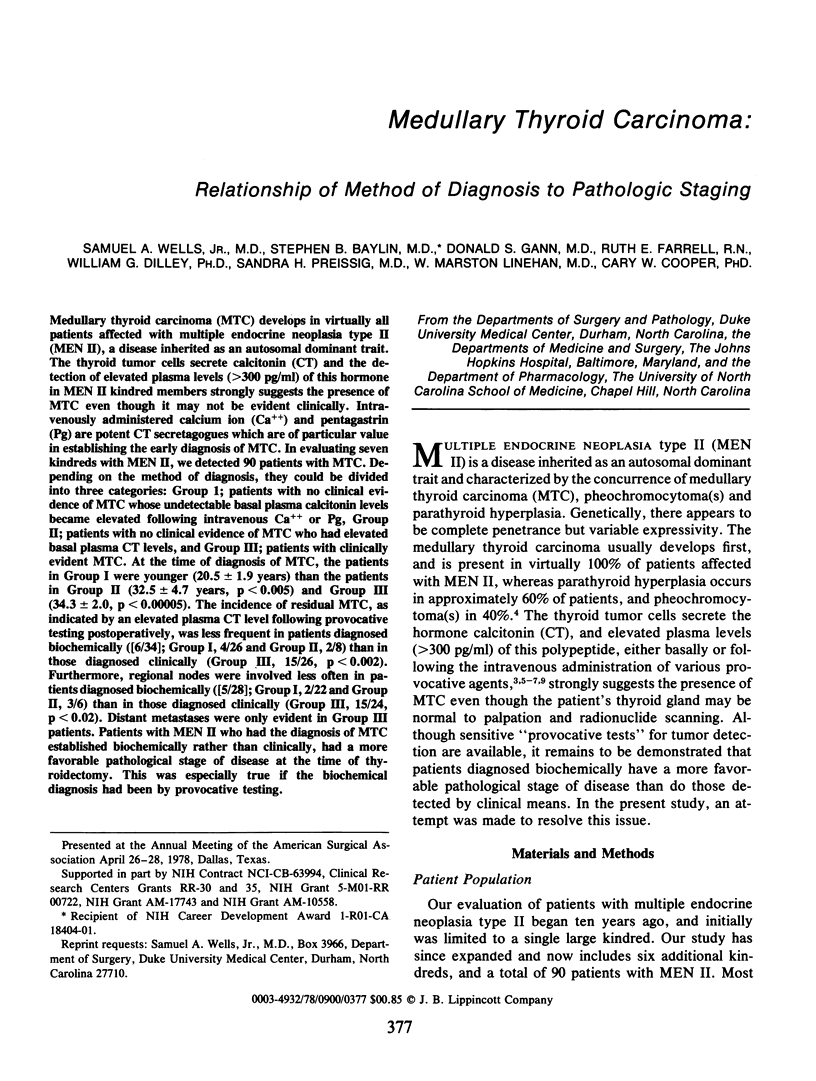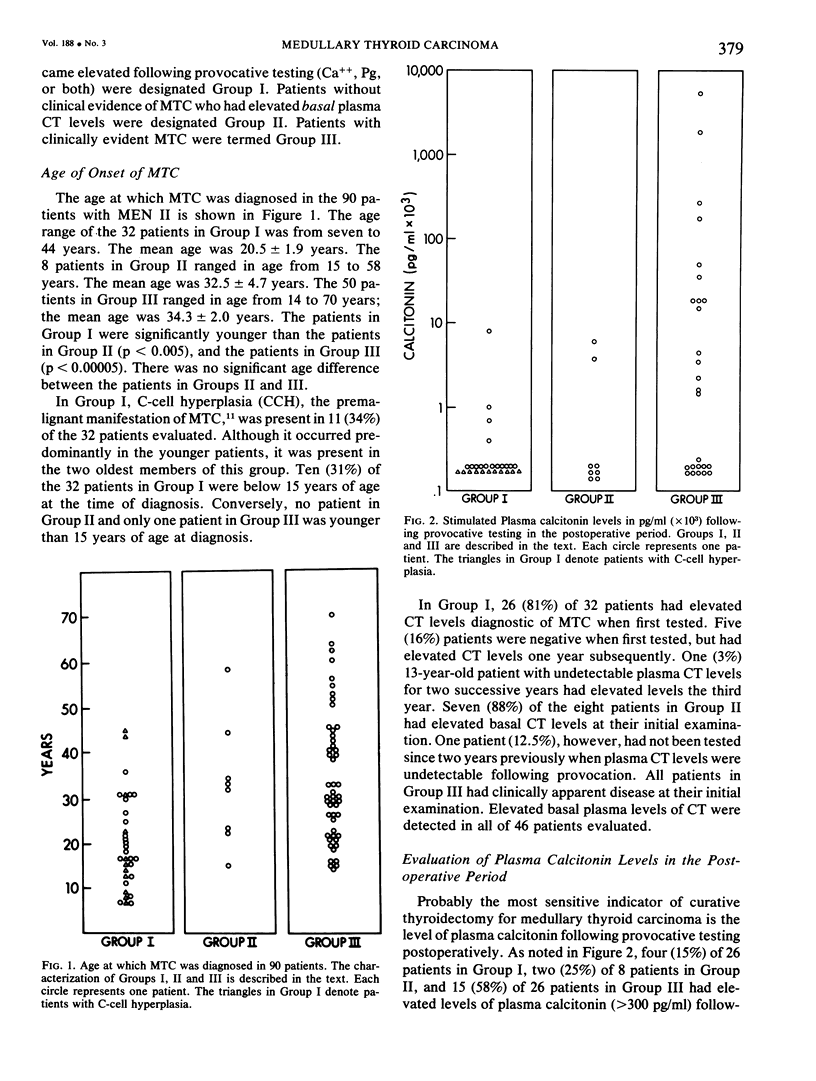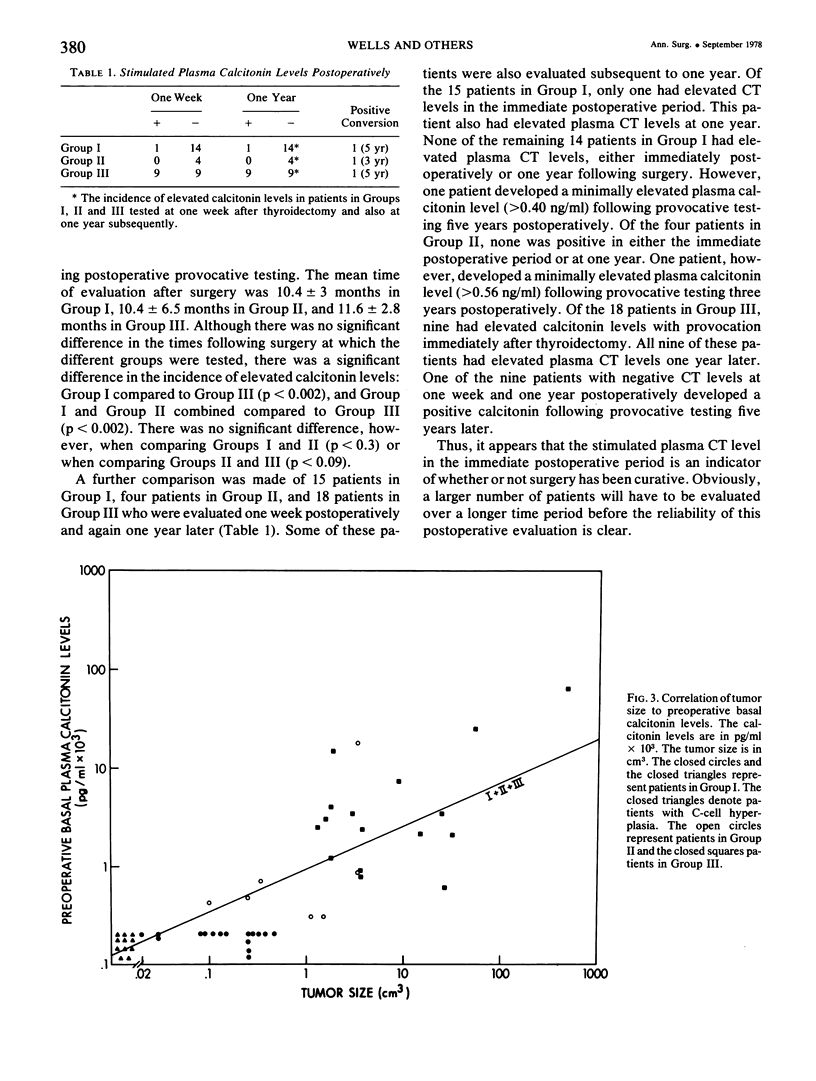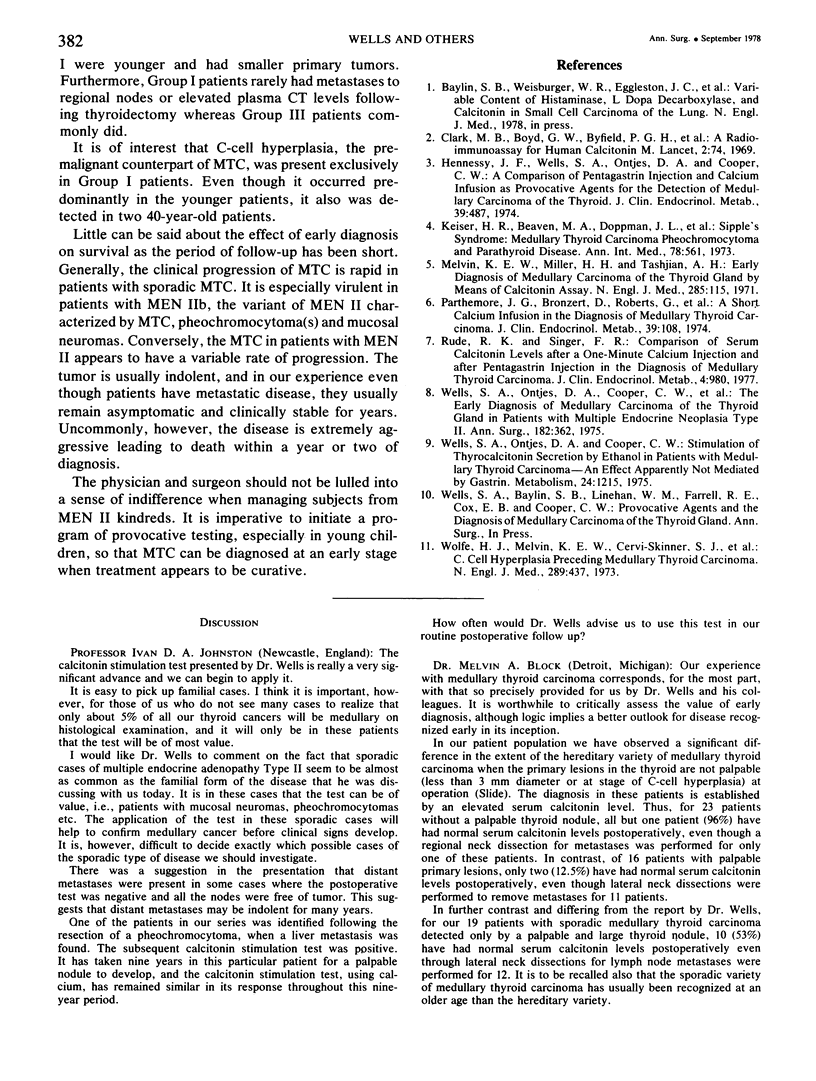Abstract
Medullary thyroid carcinoma (MTC) develops in virtually all patients affected with multiple endocrine neoplasia type II (MEN II), a disease inherited as an autosomal dominant trait. The thyroid tumor cells secrete calcitonin (CT) and the detection of elevated plasma levels (>300 pg/ml) of this hormone in MEN II kindred members strongly suggests the presence of MTC even though it may not be evident clinically. Intravenously administered calcium ion (Ca++) and pentagastrin (Pg) are potent CT secretagogues which are of particular value in establishing the early diagnosis of MTC. In evaluating seven kindreds with MEN II, we detected 90 patients with MTC. Depending on the method of diagnosis, they could be divided into three categories: Group 1; patients with no clinical evidence of MTC whose undetectable basal plasma calcitonin levels became elevated following intravenous Ca++ or Pg, Group II; patients with no clinical evidence of MTC who had elevated basal plasma CT levels, and Group III; patients with clinically evident MTC. At the time of diagnosis of MTC, the patients in Group I were younger (20.5 ± 1.9 years) than the patients in Group II (32.5 ± 4.7 years, p < 0.005) and Group III (34.3 ± 2.0, p < 0.00005). The incidence of residual MTC, as indicated by an elevated plasma CT level following provocative testing postoperatively, was less frequent in patients diagnosed biochemically ([6/34]; Group I, 4/26 and Group II, 2/8) than in those diagnosed clinically (Group III, 15/26, p < 0.002). Furthermore, regional nodes were involved less often in patients diagnosed biochemically ([5/28]; Group I, 2/22 and Group II, 3/6) than in those diagnosed clinically (Group III, 15/24, p < 0.02). Distant metastases were only evident in Group III patients. Patients with MEN II who had the diagnosis of MTC established biochemically rather than clinically, had a more favorable pathological stage of disease at the time of thyroidectomy. This was especially true if the biochemical diagnosis had been by provocative testing.
Full text
PDF





Selected References
These references are in PubMed. This may not be the complete list of references from this article.
- Clark M. B., Boyd G. W., Byfield P. G., Foster G. V. A radioimmunoassay for human calcitonin M. Lancet. 1969 Jul 12;2(7611):74–77. doi: 10.1016/s0140-6736(69)92389-7. [DOI] [PubMed] [Google Scholar]
- Hennessy J. F., Wells S. A., Jr, Ontjes D. A., Cooper C. W. A comparison of pentagastrin injection and calcium infusion as provocative agents for the detection of medullary carcinoma of the thyroid. J Clin Endocrinol Metab. 1974 Sep;39(3):487–495. doi: 10.1210/jcem-39-3-487. [DOI] [PubMed] [Google Scholar]
- Keiser H. R., Beaven M. A., Doppman J., Wells S., Jr, Buja L. M. Sipple's syndrome: medullary thyroid carcinoma, pheochromocytoma, and parathyroid disease. Studies in a large family. NIH conference. Ann Intern Med. 1973 Apr;78(4):561–579. doi: 10.7326/0003-4819-78-4-561. [DOI] [PubMed] [Google Scholar]
- Parthemore J. G., Bronzert D., Roberts G., Deftos L. J. A short calcium infusion in the diagnosis of medullary thyroid carcinoma. J Clin Endocrinol Metab. 1974 Jul;39(1):108–111. doi: 10.1210/jcem-39-1-108. [DOI] [PubMed] [Google Scholar]
- Rude R. K., Singer F. R. Comparison of serum calcitonin levels after a 1-minute calcium injection and after pentagastrin injection in the diagnosis of medullary thyroid carcinoma. J Clin Endocrinol Metab. 1977 May;44(5):980–983. doi: 10.1210/jcem-44-5-980. [DOI] [PubMed] [Google Scholar]
- Wells S. A., Jr, Cooper C. W., Ontjes D. A. Stimulation of thyrocalcitonin secretion by ethanol in patients with medullary thyroid carcinoma--an effect apparently not mediated by gastrin. Metabolism. 1975 Nov;24(11):1215–1219. doi: 10.1016/0026-0495(75)90060-8. [DOI] [PubMed] [Google Scholar]
- Wells S. A., Jr, Ontjes D. A., Cooper C. W., Hennessy J. F., Ellis G. J., McPherson H. T., Sabiston D. C., Jr The early diagnosis of medullary carcinoma of the thyroid gland in patients with multiple endocrine neoplasia type II. Ann Surg. 1975 Oct;182(4):362–370. doi: 10.1097/00000658-197510000-00002. [DOI] [PMC free article] [PubMed] [Google Scholar]


